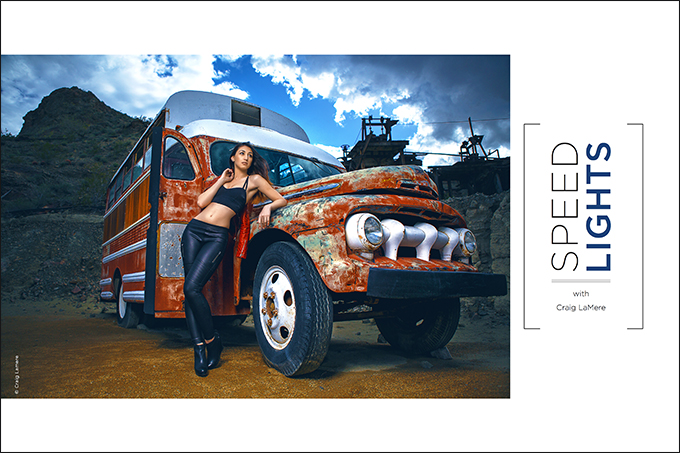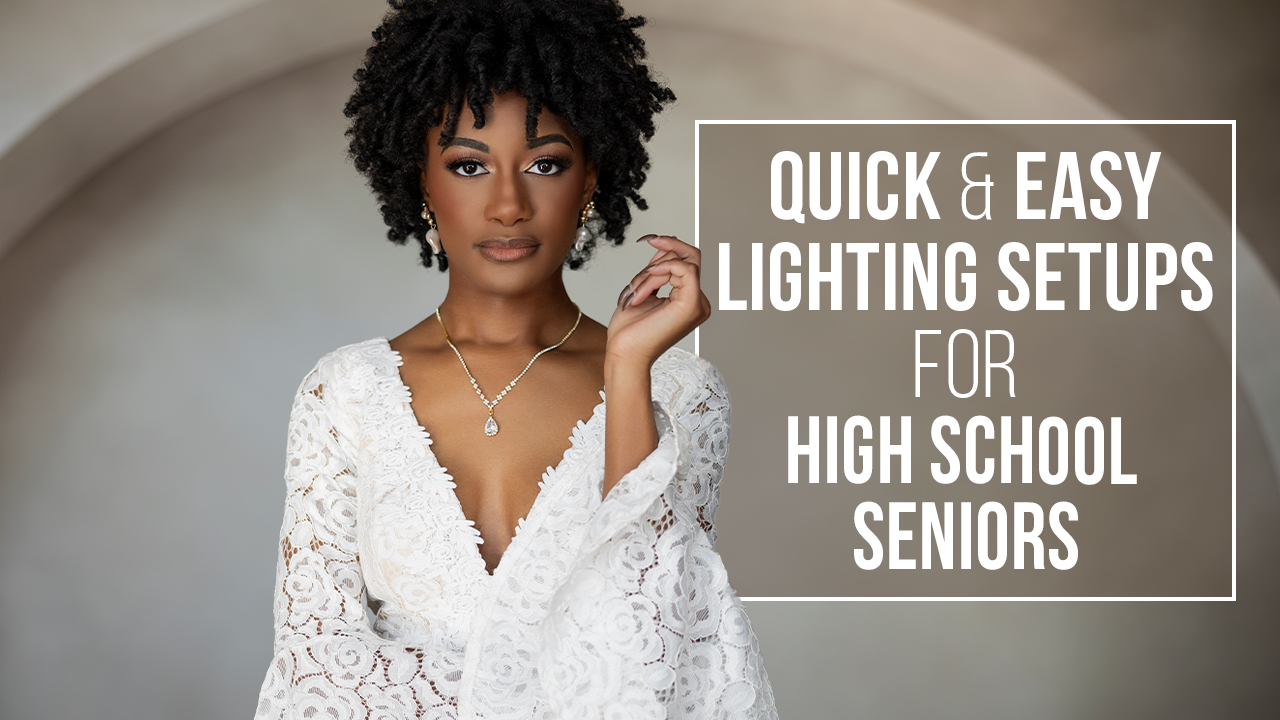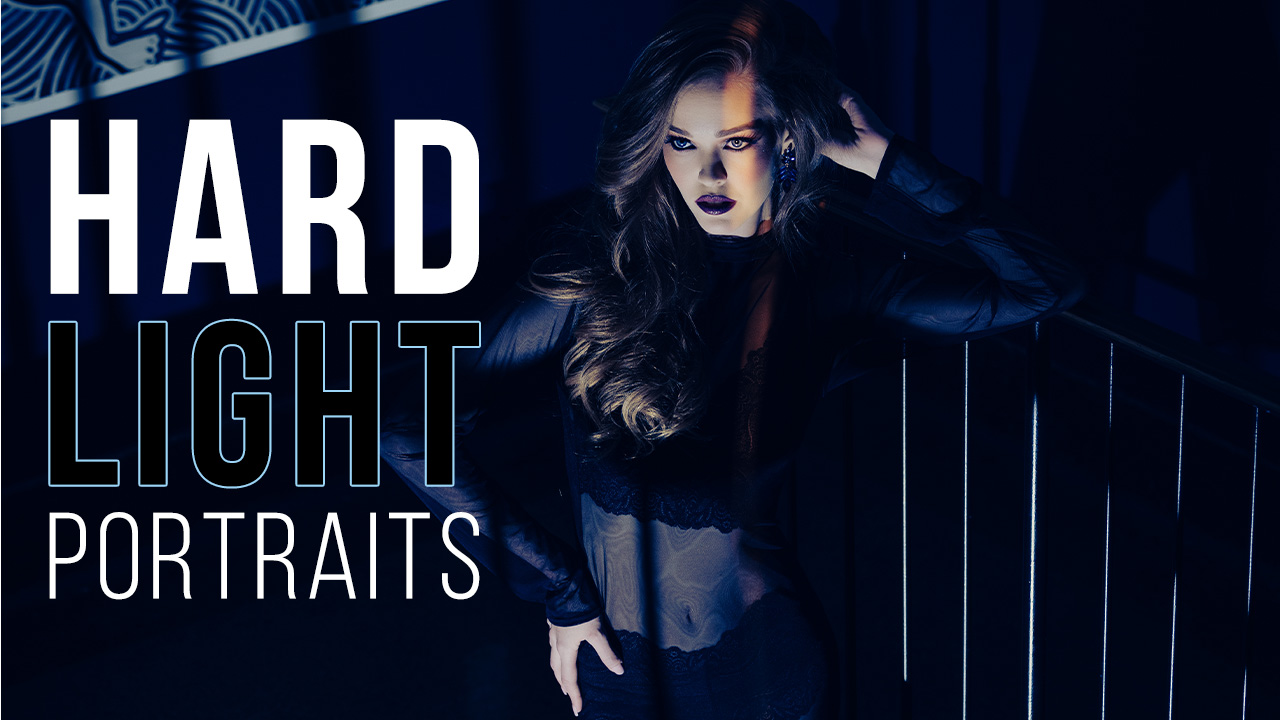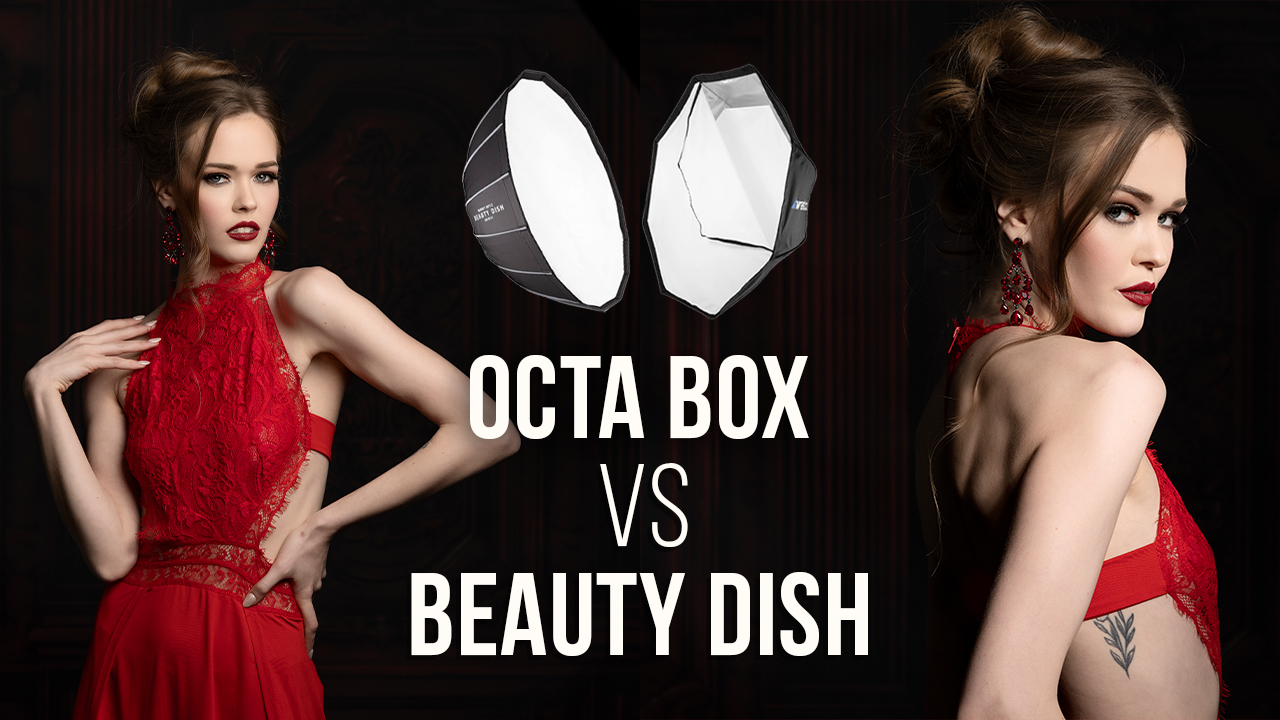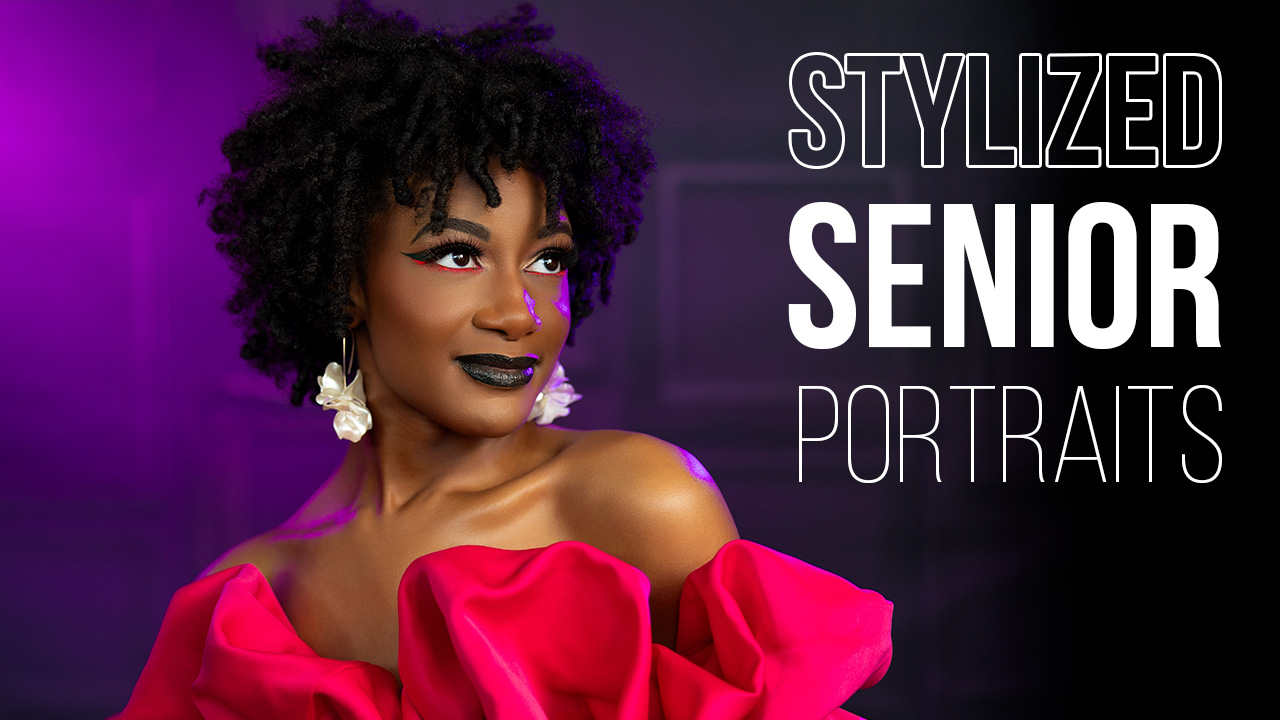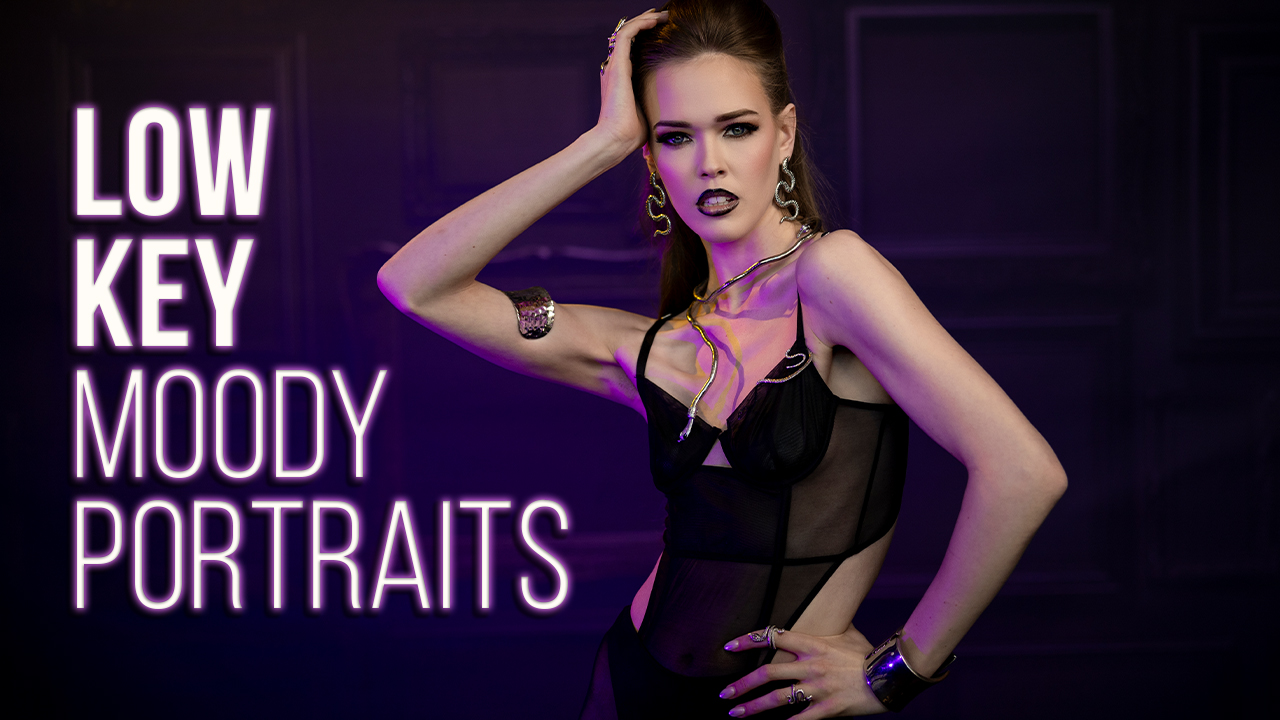The power of Speedlights w Craig LaMere
One of the main dilemmas faced by newer shooters is deciding which type of artificial light to invest in with a limited budget. The basic question is: What is the best bang for the buck that will help you grow the most? This month, I talk about the pros and cons about the two most common solutions to OCF shooting: speedlights versus mono strobe lights.
I had been shooting for a few months when I decided the pop-up flash on my Canon Rebel was not cutting it. I knew I needed to step my game up a little to get the images I wanted. I decided to take the plunge into artificial light for my outside location shoots, so I saved my pennies and bought a Canon Speedlight. When I first got it, I did the only thing I knew how to do at the time, and that was to keep the flash in the hot shoe. I used it as fill, trying to bounce it off stuff to create different looks. Then I found off-camera flash (OFC), which was the game changer.
Once I took the flash off the camera, I discovered a new world. I had been shooting constant lights in my studio, but then when I got brave enough to start shooting strobes inside, I took it a step further and started shooting with my strobes outside.
Nowadays, I do not really shoot speedlights anymore, and primarily shoot strobes, but this month I will go over the strengths and weaknesses of both strobes and speedlights for location shooting.
Portability
If you are a shooter on the go, portability may be a huge factor in deciding your lighting source. For me, the number-one pro to using speedlights over strobe lighting is portability. A speedlight is about the size of a water bottle and weighs a pound or so. You can easily pack one or two in your camera bag. Strobes are considerably larger. The smallest strobe head is about the size of a shoebox and weight a few pounds. They really are not designed to toss into a camera bag and run.
Power
When you talk about the amount of power you have at you disposal to light your subjects, you will encounter the term watt seconds. This refers to the power output of your light source. The more watt seconds your light source produces, the more light output you have. Speedlights produce somewhere between 60 and 100 watt seconds of power. Strobes produce 300 to 1,250 watt seconds of power. Even the smallest strobe head is significantly more powerful than your most powerful speedlight. In most cases, a strobe has at least five times more power. The difference in power may not be a huge thing if you are shooting inside or in a dim setting outside, but when you are trying to overpower the sun or when you are trying to use larger or gridded modifiers, power quickly becomes a very relevant concern. There are brackets you can buy to stack a number of speedlights together to solve the power issue, but for this comparison, I’m just basing my opinions on one head against one head. If power is one of your main needs, then strobes have the advantage over speedlights.
Power source
Speedlights generally run on four AA batteries. There are also external battery pack options that allow you to add more power. These packs usually hold eight AA batteries and work in conjunction with the four batteries in the speedlight. They are right around 4 by 6 inches, so they are easy to travel with. External packs are a fantastic option if you are shooting a lot of images or shooting fast. They allow your speedlight to recycle more quickly, and give you the ability to shoot a lot longer before you have to change batteries. They are vital to me when I use speedlights to shoot weddings.
There are a number of options for portable battery power. Portable packs for strobes come in many sizes, from a small shoebox to as big as a block of ice. The battery pack I use is the size of a small shoebox and weighs a few pounds. One of the biggest differences in the power sources for speedlights versus strobes is the ability to replenish power. All you have to do when you run out of battery life in a speedlight is change the batteries in the unit. When you run out of juice in your portable battery pack for your strobe, you better either have another one on hand or have four to eight hours to recharge it. It’s tricky to proclaim the superiority of either since there are tradeoffs for each.
Light modifiers
To me, the ability to modify and manipulate light is the key to getting the images I want, and both speedlights and strobes have products available to get the job done. The three most common modifiers are softboxes, octaboxes and beauty dishes. Softboxes are rectangular or square fabric boxes you shoot light through to create soft, pretty light. They come in many sizes. Octaboxes are basically the same as a softbox, but circular. It’s the choice between a catchlight that is square or round.
Beauty dishes are circular shallow metal discs that create a light that’s not as hard as what’s produced by the bare head from a speedlight or the bare bulb of a strobe. It’s not as soft as the light from a softbox or octabox. It’s pretty much in the middle. The most common size is the 22-inch.
Here is where your decision to choose speedlights or strobes can get tricky. As I said before, the greatest advantage to strobes over speedlights is pure power. The bigger the modifier, the softer the light and the more coverage you have at your disposal. This is where the lack of power in the speedlight head versus the strobe head becomes an issue. The speedlight does not have the power to run the bigger modifiers properly, and they do not have enough power to run modifiers in bright light at any real distance. This is why most of the light-modifying products on the market for speedlight use are small to medium in size. This is not as much of an issue in dim settings or indoor settings, but in the middle of the day, when you are trying to beat the sun, it will be a real concern.
Because of the variety of modifiers you can get and what you are able to do with them in any situation, the advantage has to go to strobes over speedlights.

